- Homepage
- News and Features
- Following in Old Tom's footsteps at St Andrews
Following in Old Tom's footsteps at St Andrews
Sandy Reid is director of greenkeeping at St Andrews after previously being links superintendent across the Tay at Carnoustie.
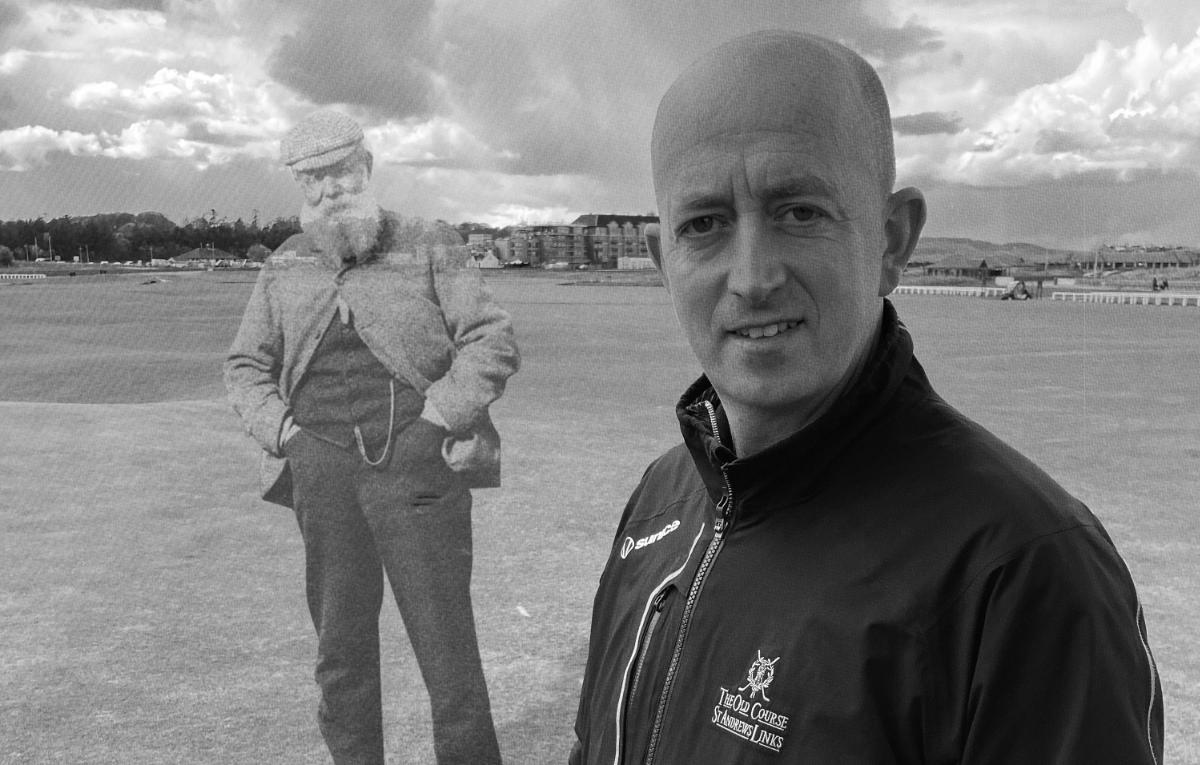
Old Tom became director of greenkeeping through iron will, an incredible dedication to golf and an innovative spirit that saw him shape the game as we know it today. We wanted to find out what it takes to get to the highest position in golf today.
Greenkeeper International: How are you settling in?
Sandy Reid: I’ve been here 2.5 years and this is very similar to Carnoustie. It’s the one role you could compare to St Andrews in that you’ve multiple courses with a similar demographic of customers, with thousands of members, who get the golf relatively cheap, and visitors that pay a lot of money and for a once‑in‑a‑lifetime trip. The governance structure is also very similar.
I’m not involved in the day‑to‑day running of the courses per‑se. I’ll speak to the course managers individually fairly regularly and we currently catch up on Microsoft Teams once a fortnight as we’re all spread over different sites. Before COVID we would gather in the Jubilee sheds along with the workshop manager and irrigation engineer and I see my role as supporting them. When I was at Carnoustie I worked under John Philp, a legendary greenkeeper, but I didn’t necessarily want him telling me what to do when I was head of the championship course. I let the guys running the courses have the ability to do so and they have the accountability to manage their course and staff accordingly.
One of my jobs is to make sure no one is doing something completely different, especially when it comes to man management.
I see myself as a diplomat at times with the rest of the organisation. One of the main differences between here and Carnoustie is the size of the organisation here and there’s way more that goes on away from the courses that I’m involved with. For example, I look after health and safety for the whole organisation, not just greenkeeping, and so I have to have my eyes and ears open elsewhere and not just on the courses.
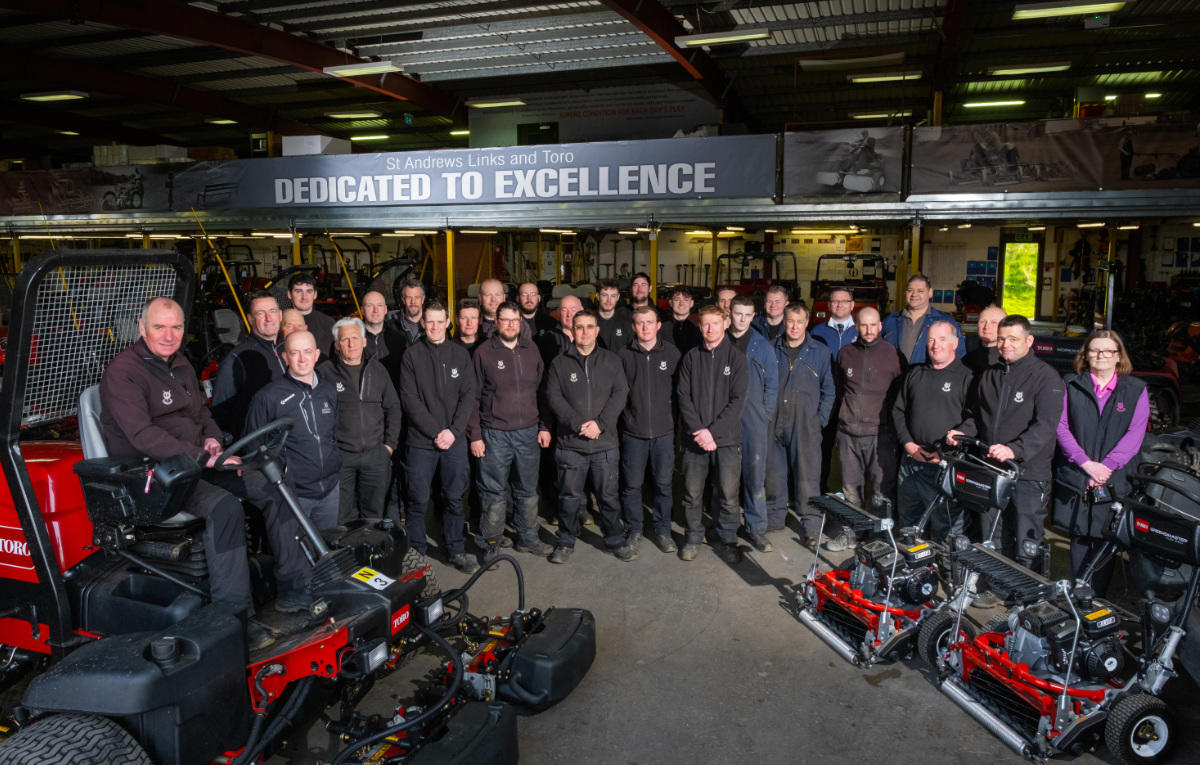
One of the things Tom did was be a public figure in the town – are you? You’re not just a greenkeeper responsible for the club, you’re director of greenkeeping for the region’s biggest asset. Are you a very public figure in St Andrews?
I’m probably more well‑known than I may think I am. I view my role as responsible for the courses and the guys that run them. I’m a custodian looking after it for a short period in the grand scheme of things and just hope to leave it slightly better than I found it, and it was pretty good when I found it! This place is way bigger than any individual.
Golfers quite enjoy those interactions with their greenkeepers. It doesn’t have to come from the top and in my experience, golfers enjoy speaking with the greenstaff and having a bit of banter and a laugh. I would suggest that greenkeepers shouldn’t be afraid to say ‘hello, how are you doing?’ Anything that creates less of a ‘them and us’ situation so they view you less as a grass cutter is positive. I’ll speak to people, ask them how their day’s going, » where they come from, that sort of thing is going to help you build a rapport, so don’t be afraid of that.
Have you achieved your career ambitions?
In greenkeeping I guess it doesn’t get any bigger than here, but for me it is just about personal satisfaction and hoping I can play my part to improve St Andrews. It comes with the territory that you’re slightly higher profile within greenkeeping circles and people may look up to you, but I’m just a greenkeeper. I became a greenkeeper when I was 16 and I’ve worked my way up. I’m no better than anyone else and there’s way better greenkeepers than me out there.
If that’s the case, what was it about you that made you rise to this level?
I wanted to be a gamekeeper but I’d worked at Pitlochry as a schoolkid from 14 during the holidays and I just enjoyed the outdoors. How I got to where I’ve got is perhaps by working hard and a love of the game of golf. Those are the two things I would put it down to. I’ve not got loads of qualifications and Level 4 is as high as I got qualification‑wise. I can’t speak for those who interviewed me for this position, but I came with experience of looking after another large venue that’s very similar.
Not that I was resting on my laurels but I thought, when I got the Carnoustie job eight or nine years ago, as a 35‑year‑old, that it may be my last job. This was the only place that would turn my head, but I hadn’t thought about it.
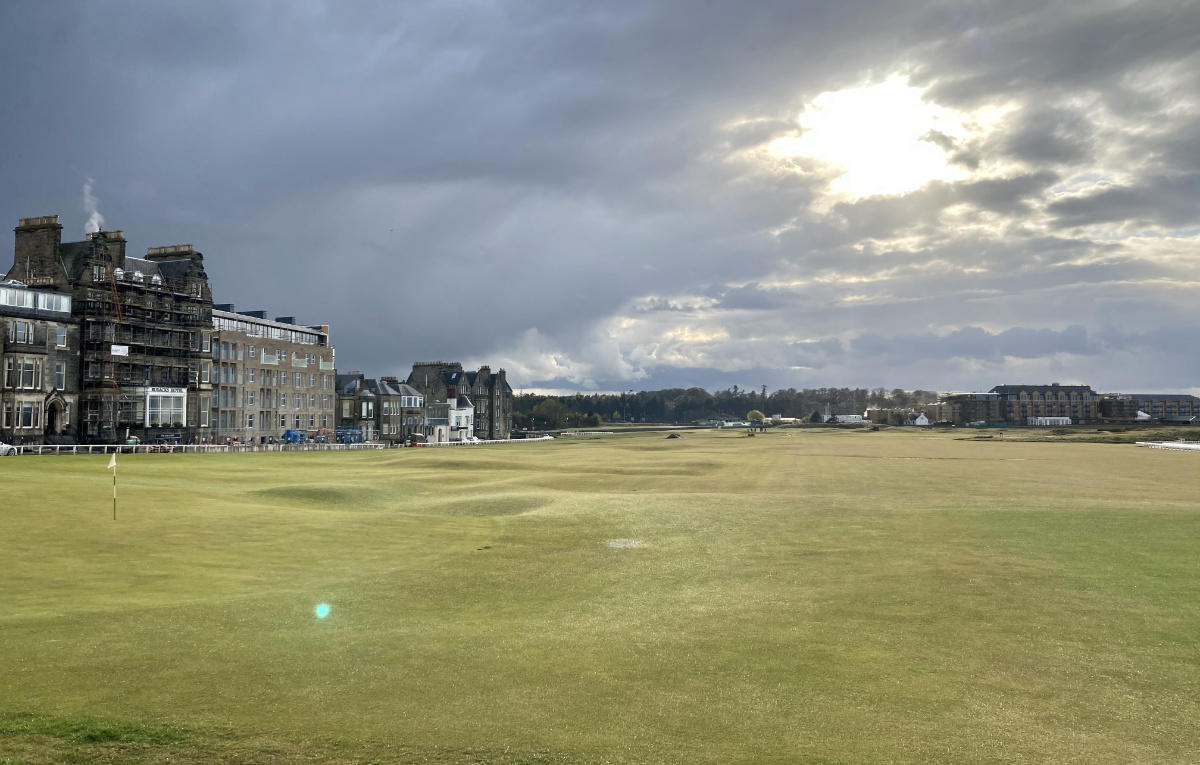
What was the application process for the St Andrews Director of Greenkeeping role?
You had to submit your application by post, you weren’t allowed to do so by email. When the job came up at the end of June 2018 I was busy preparing for The Open at Carnoustie, so there was a million other things going on in my mind. The closing date was the Friday after The Open finished and I still hadn’t made up my mind whether I wanted to apply for the job. I drove over to St Andrews at 8 o’clock Thursday night and handed in my application to the reception desk in the Eden clubhouse. It was a single‑sided covering letter with my two‑page CV include with it. It was supposed to have been posted to the chief executive, Euan Loudon, so I wasn’t sure who to give it to. I’d been unsure because I didn’t want to apply for it if I didn’t want the job and I loved Carnoustie, my job, the courses and everything we had as a family there. I always felt that if I was fortunate enough to get the job we would be moving house. Carnoustie’s only 45 minutes away, but I’ve always been one to live close to work.
You said you don’t have loads of qualifications, so what’s the most important thing that’s on your CV?
Proven experience of looking after a similar venue and the tournaments we hosted. Just before I left, I counted it up and the final Dunhill Links was my 31st professional or elite amateur golf tournament in 21 years there.
I’ve been fortunate in my career that I didn’t have to move courses and I could move up the ladder. Positions became available and what I always said to myself was make it straightforward for those who are making the decisions. I remember when I was 22, the foreman’s job came up on the Buddon Course and I didn’t get that position and was gutted. I was disappointed because I thought I was the man. I worked hard and it reinforced my view that I just had to make sure I was the right man next time. I didn’t do anything extra, I just understood that these opportunities would come up again and, whether it was John Philp’s choice or the committee’s choice, I like to think I made it very easy for them to decide.
Have you been so diplomatic your entire life?
No, and I had a difficult time with a greens convener at Carnoustie when I was head greenkeeper of the Championship. But over time, especially when I became links superintendent, I would have viewed him as an ally rather than an enemy. As you mature you understand that there are relationships you need to have, there are battles worth having and sometimes there are others worth letting go. You know the important fights and where you can have compromises with others.
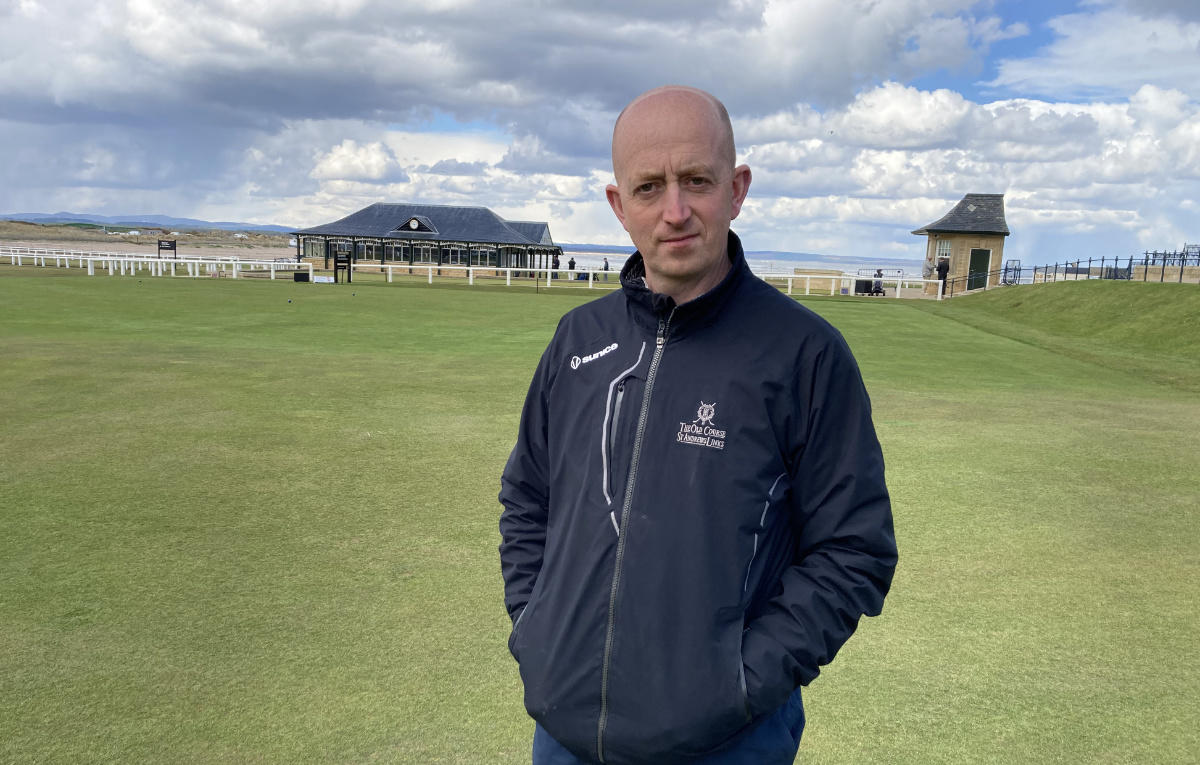
What is Tom Morris’ legacy for you, the greenkeeping team and the course?
He was an innovator and he made a lot of changes, whether it be physically to the course, building or rerouting the layout of the Old, the old story of finding out about topdressing by spilling a barrow of sand and using treacle tins as the first metal hole cups. He didn’t invent the lawn mower, but he introduced it to St Andrews during his time as keeper of the green, so he was always looking at new ways to present the course. I would say he understood the game, he was one of the best players of his time and understood the golfer experience. He was an innovator and I want to make sure we continue innovating to help the greenkeeping industry progress. As everything becomes more electric or robotic, we want to be a part of that story, but always with an eye on the heritage and history of the game of golf and St Andrews.
Could we one day see a robot mower doing the Old Course’s 18th green?
Absolutely, yes.
Is that a worrying thing for the industry?
I can see why people would be fearful of that and when it comes to having an eye on the past, golfers would love to come along and see people cutting the 18th green, I get that, but time moves on. I would expect to be using robotic equipment here in the next 10 years, probably sooner if you’re talking semi‑robotic. I wouldn’t see it necessarily as a threat to jobs as there are other things we can do, albeit availability of labour is an issue in the greenkeeping industry. We utilise a lot of seasonal fixed‑term contract staff and that’s becoming more difficult to get, so technology may replace seasonal rather than permanent staff.
For the younger, PlayStation generation, is technology the way we attract people to the profession?
Those sorts of things can attract people, but I don’t know whether it will necessarily make them good greenkeepers because you will always need your eyes and feet on the turf. Golfers won’t be playing virtually, they will still come to play the golf course, so their eyes and feet are on the golf course and therefore a greenkeeper will always need that. As we embrace technology, drones may help you identify turf health issues or other bits and pieces, but in my opinion, they won’t be able to dictate everything you do out there. We as managers of the turf have to appreciate what the golfer experiences.
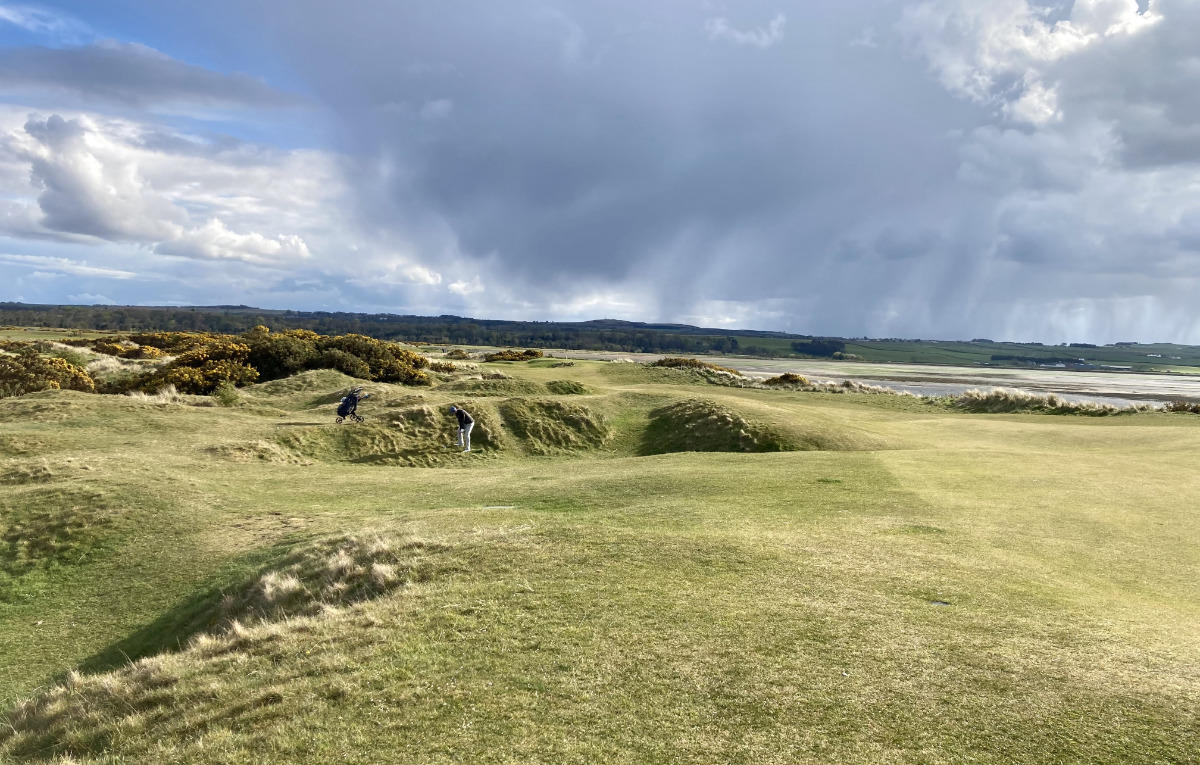
Do you see it as a responsibility of your role to speak up for greenkeeping?
With my position comes a responsibility to do the right thing for golf and greenkeeping. I want to ensure we do the right thing. My way is not shouting from the rooftops as I don’t think it’s my responsibility to seek that attention, but if I’m asked then I’ll give my opinion or some advice. There are better greenkeepers than me and I love nothing more than going to another course for a game or a chat in the sheds with the greenkeeper and seeing things they do differently that we can improve upon. It’s not like we do everything better here than anywhere else. I love going to the sheds and seeing things like how someone hangs up the flagpoles and thinking ‘why don’t we do that?’
What do you think would go through Tom’s mind if he could see the links now? What questions would you ask him – what height of cut are those sheep getting you, perhaps?
I’d be asking him about routing and foot traffic. The game was played differently back then. The course was there before him and he altered it, but I’d ask how he adjusted things, such as lines for play.
I’d like to think that he’d have appreciated our mowing and irrigation technology. At that point he only had native grasses and I’d love to ask him how he managed them. I’d like to think he would have appreciated what irrigation gives you from a turf health perspective, given the demands. We use water sparingly but irrigation was a big part of allowing links greenkeepers to maintain courses as the volume of golf increased.
Looking for something to read next?
Author

Karl Hansell
Karl has been head of communications for BIGGA since March 2016. His duties include editing the monthly Greenkeeper International magazine, in addition to other communications activities for the association.
